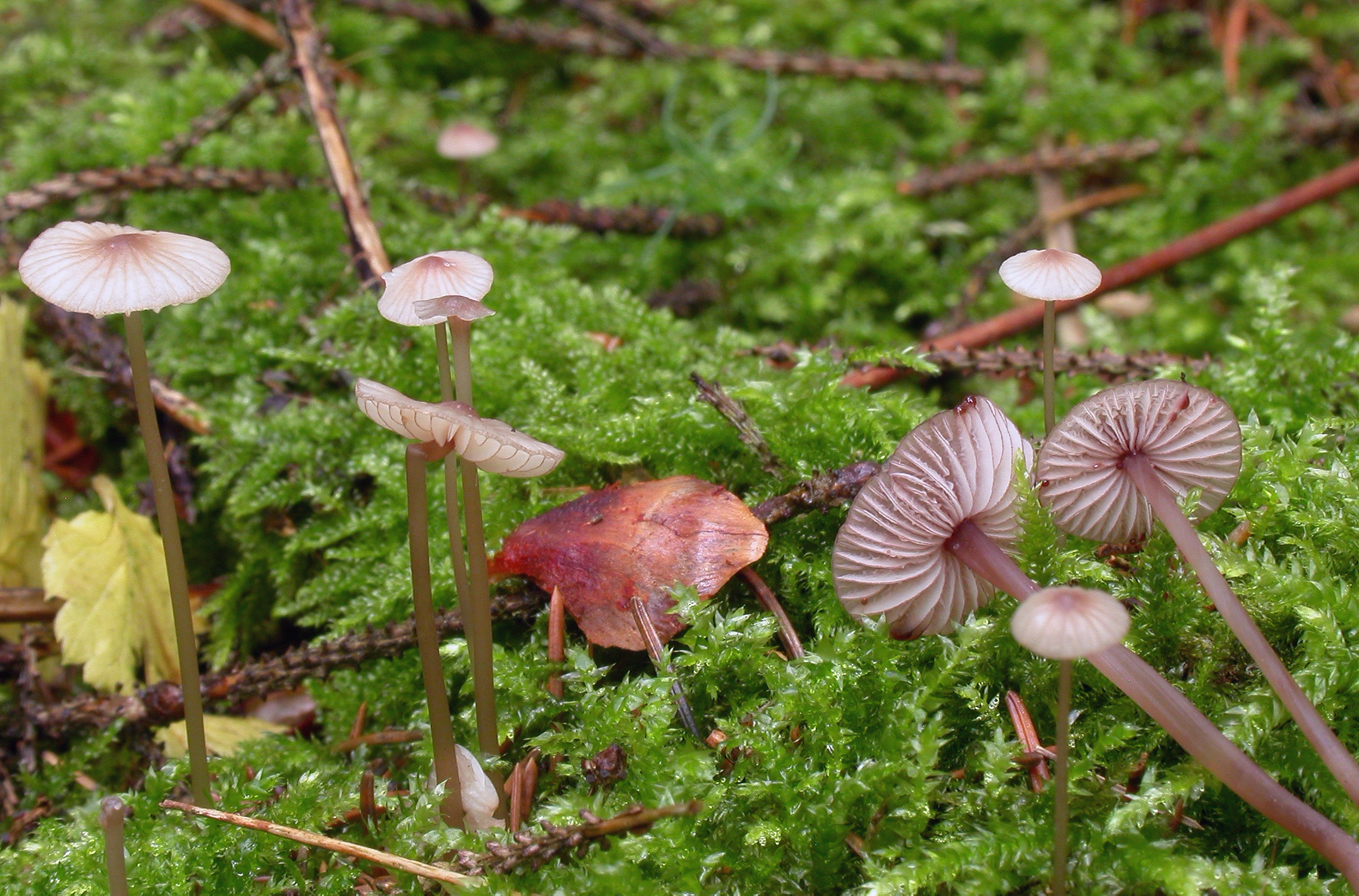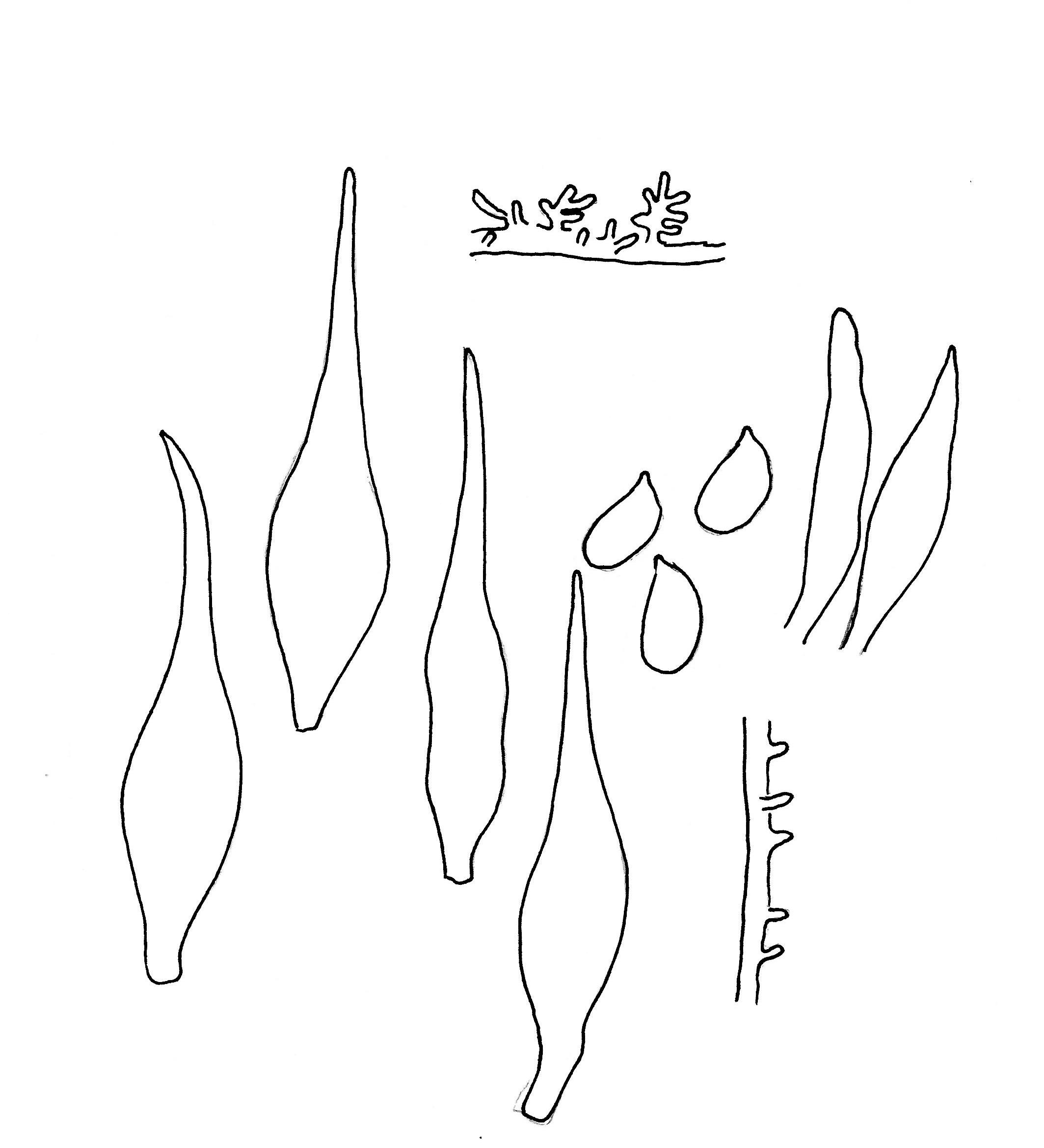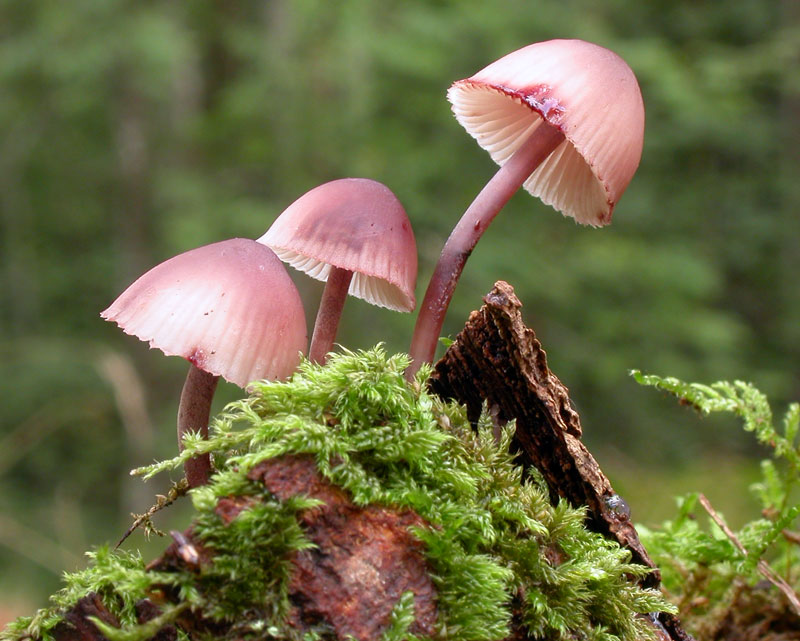Mycena sanguinolenta
Mycena sanguinolenta
Description
Cheilocystidia, hypha of the pileipellis, spores, caulocystidia and hypha of the cortical layer of the stem.
Cap 5-18 mm across conical, campanulate, convex to applanate, often papillate or umbonate, or sometimes somewhat depressed, sulcate, translucent-striate, pruinous, glabrescent, very pale brown to grey brown, often with a purple tint, with dark reddish brown centre and pale brown to brown-violet towards the margin. Gills 13-17 reaching the stem, adnexed to adnate, decurrent with a short tooth, white or greyish to pale brownish pink, the edge vinaceous red or red brown. Stem 30-60 x 0.5-1.5 mm, cylindrical, equal or somewhat widened below, minutely puberulous at the apex, glabrous farther down, exuding a brownish red to sometimes colourless fluid when cut, beige brown to brown with a vinaceous or violet tinge , base densely covered with white fibrils. Odour indistinctive. Basidia 27-35 x 8-10 µm, clavate, 4-spored. Spores 8-10(-12) x 4-6 µm, Q = 1.6-2.4, Qav ˜ 1.9, pip-shaped, amyloid. Cheilocystidia 27-55 x 6.5-10 µm, forming a sterile band, fusiform, smooth, with reddish brown contents, apically narrowed into an acute neck, but occasionally with two necks or with coarse, lateral excrescences. Pleurocystidia similar, if present. Lamellar trama dextrinoid. Hyphae of the pileipellis 2-4.5 µm wide, covered with simple to somewhat branched excrescences 2-15 x 1.5-2 µm, which may form dense masses. Hyphae of the cortical layer of the stem 1-3.5 µm wide, sparsely covered with simple to furcated, cylindrical excrescences 1.5-4.5 x 1-2 µm, caulocystidia 18-55 x 5.5-9 µm, resembling the cheilocystidia. Clamps present in all tissues.
Ecology and distribution
Gregarious on humus and vegetable debris among grass and moss, on fallen twigs and moss-covered trunks of both decidious trees and coniferous trees, and among fallen needles of coniferous trees. Summer to autumn. Widely distributed and common in Norway.


